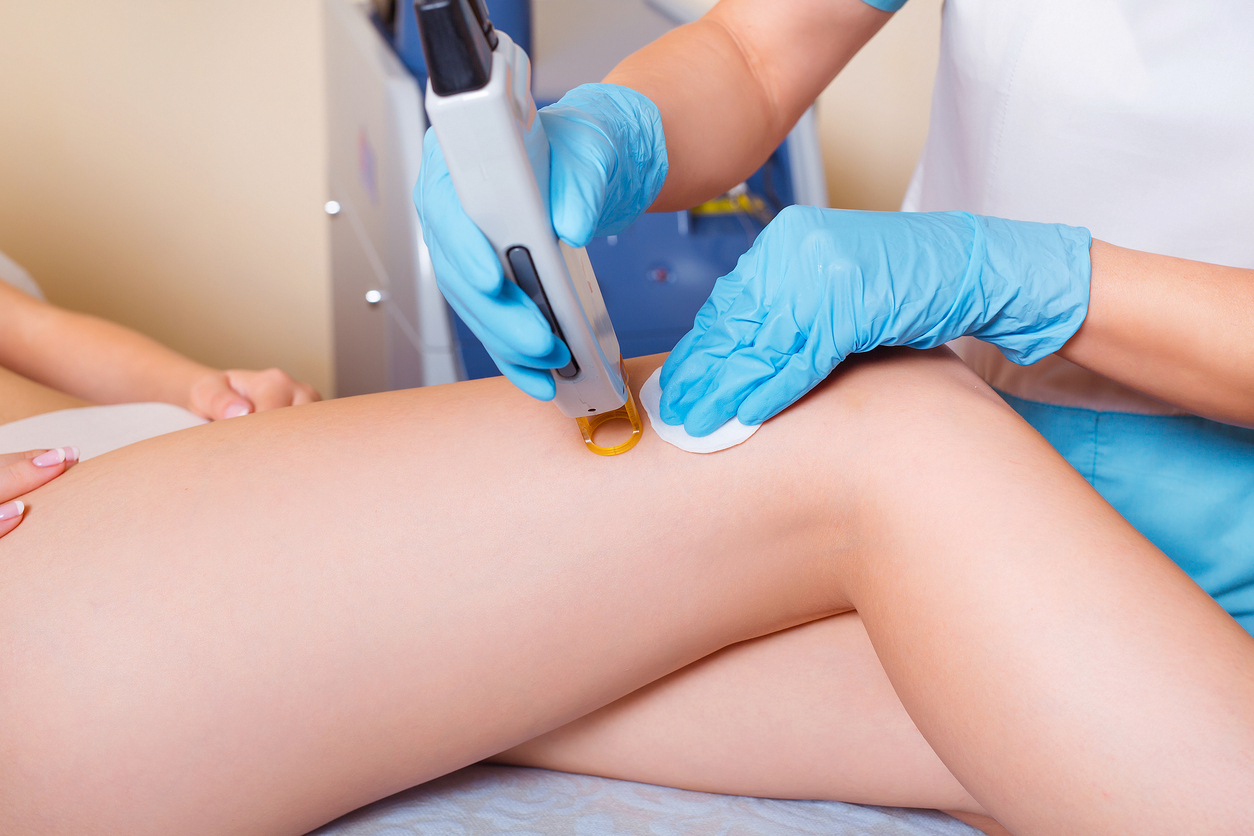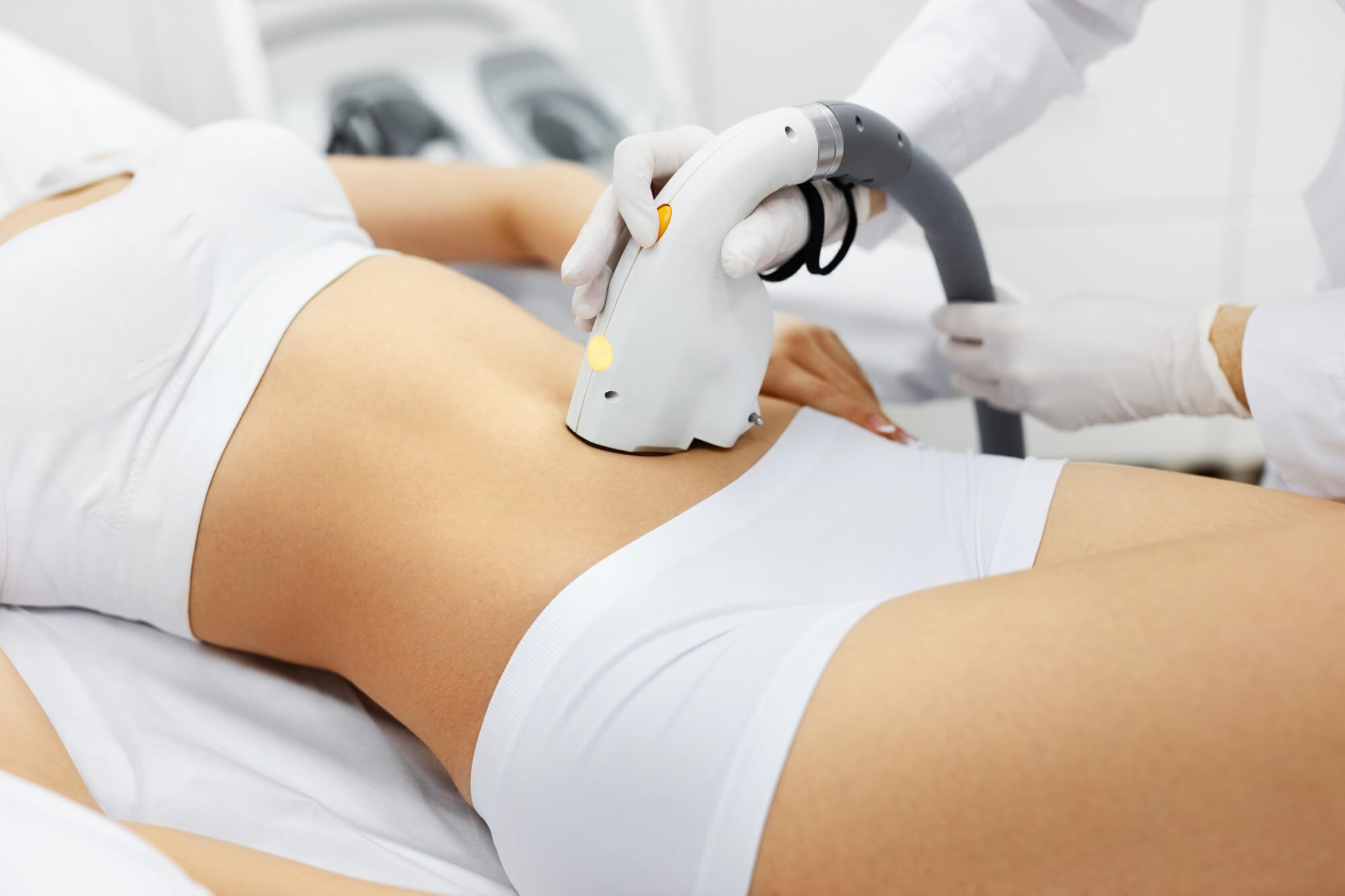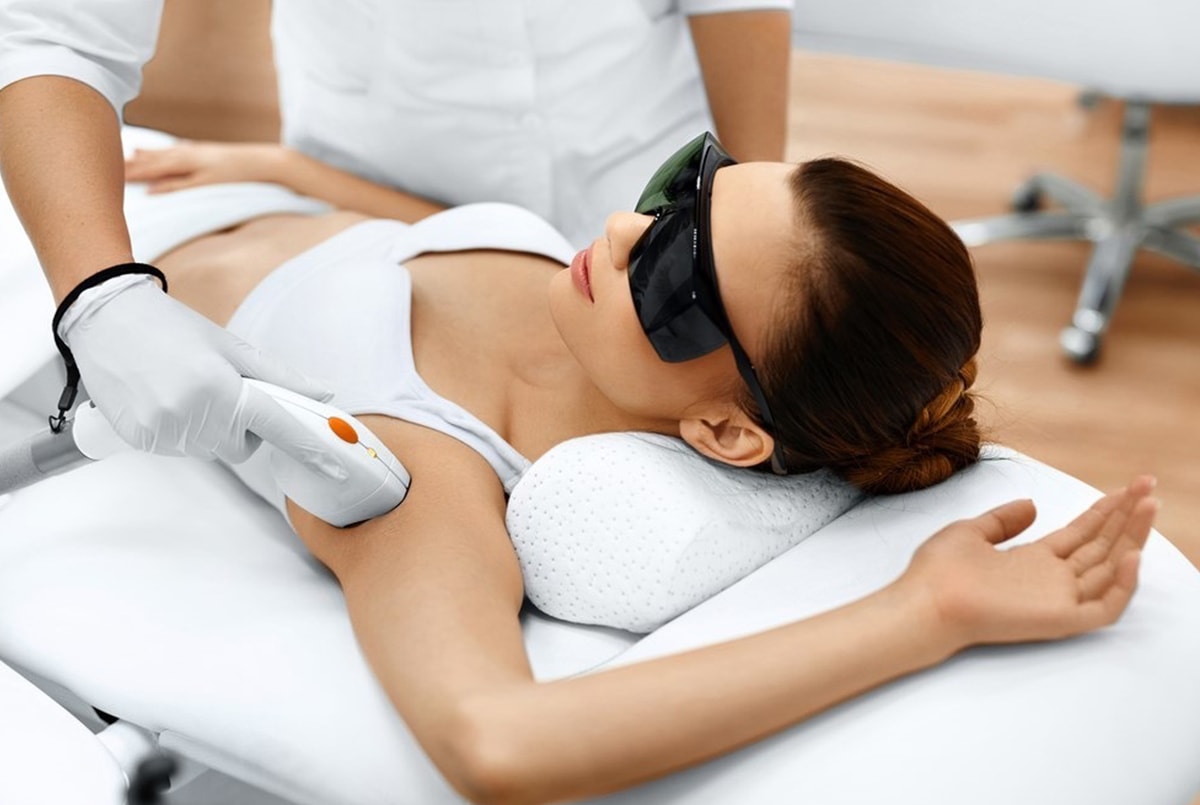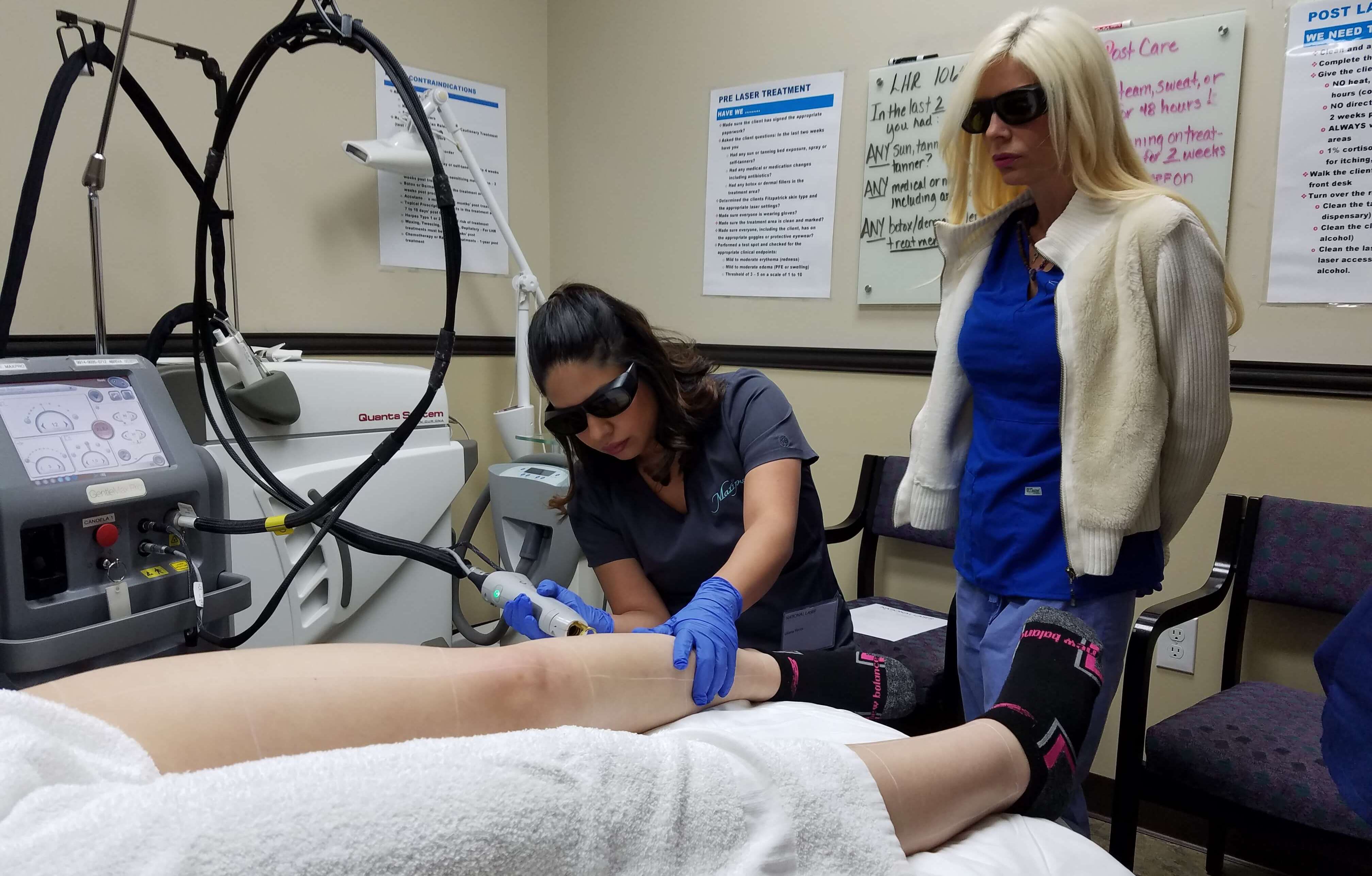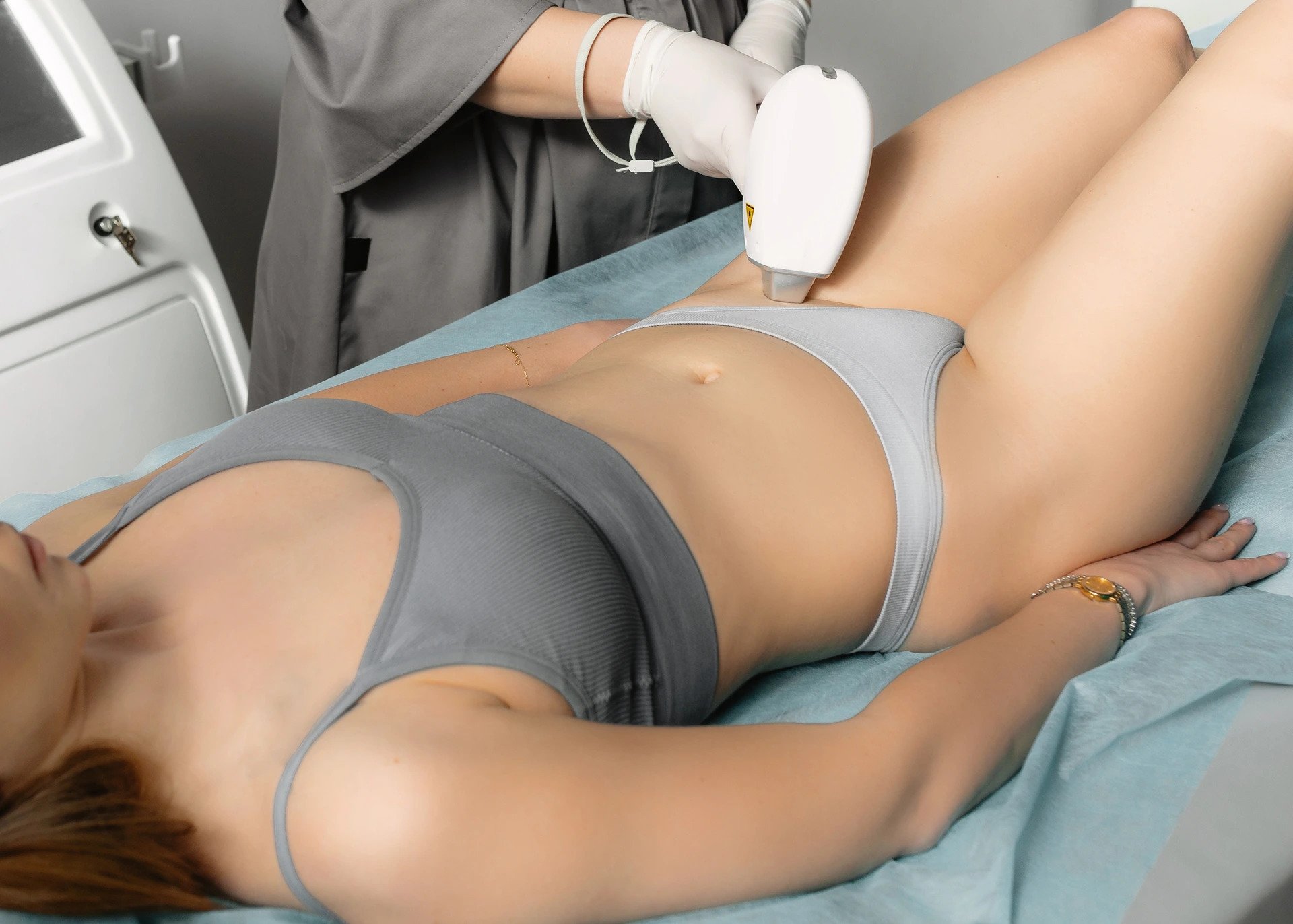Home>How-to Guides>For Women>How To Treat Laser Hair Removal Burns


For Women
How To Treat Laser Hair Removal Burns
Modified: August 5, 2023
Discover effective remedies for treating laser hair removal burns in women with our comprehensive guide. Heal and soothe your skin with our expert tips.
(Many of the links in this article redirect to a specific reviewed product. Your purchase of these products through affiliate links helps to generate commission for Under-tec.com, at no extra cost. Learn more)
Table of Contents
Introduction
Laser hair removal has become a popular method for achieving long-lasting hair reduction. It offers a convenient and effective solution for women who are tired of constantly shaving or waxing. However, just like any other cosmetic procedure, there can be risks involved.
One of the risks associated with laser hair removal is the possibility of developing burns. While these burns are relatively rare, they can occur due to various factors such as improper technique, incorrect settings, or sensitivity to the laser. Burns can range from minor skin irritation to more serious injuries requiring medical attention.
In this article, we will explore the topic of laser hair removal burns in depth. We will discuss how to identify the severity of burns, immediate steps to take for first-degree burns, appropriate treatment for second-degree burns, and the importance of seeking medical attention for third-degree burns. Furthermore, we will explore home remedies for relieving burn symptoms and provide tips for preventing laser hair removal burns altogether.
It is important to note that while the information in this article is valuable, it is not a substitute for professional medical advice. If you have concerns about a laser hair removal burn, it is always best to consult with a healthcare professional or a licensed aesthetician.
Now, let’s delve into the world of laser hair removal burns and learn how to effectively treat and prevent them.
Understanding Laser Hair Removal Burns
Laser hair removal burns occur when the skin is exposed to excessive heat or energy from the laser device. While the purpose of the laser is to target and destroy the hair follicles, it can sometimes unintentionally damage the surrounding skin. The severity of the burn can vary and is typically classified into three degrees: first-degree, second-degree, and third-degree burns.
First-degree burns are the mildest form of burns and mainly affect the outer layer of the skin. They are characterized by redness, slight swelling, and mild discomfort. These burns usually heal on their own within a few days to a week, and they rarely leave any lasting damage or scars.
Second-degree burns are more severe and extend beyond the outer layer of the skin. They cause significant redness, blistering, pain, and may take longer to heal than first-degree burns. It is important to treat these burns properly to prevent infection and minimize scarring.
Third-degree burns are the most severe and require immediate medical attention. These burns penetrate all layers of the skin and can result in charring, blackening, or white discoloration. Third-degree burns are usually painless since the nerve endings are destroyed. Prompt medical treatment is essential to prevent complications and promote proper healing.
It is crucial to note that not all burns from laser hair removal are the result of negligence or incompetence. Personal factors such as skin type, sensitivity, and the individual’s reaction to the laser can also contribute to the likelihood of developing burns. Therefore, it is important to consult with a qualified and experienced technician who can assess your skin type and adjust the laser settings accordingly.
In the next section, we will discuss how to identify the severity of burns to determine the appropriate course of action.
Identifying the Severity of Burns
When it comes to treating laser hair removal burns, it is essential to accurately assess the severity of the burn. This helps determine the appropriate steps to take and whether medical attention is necessary.
First-degree burns are characterized by mild symptoms such as redness, slight swelling, and tenderness. The affected area may feel warm to the touch but does not blister. These burns typically heal on their own within a few days to a week. It is important to keep the area clean, apply soothing ointments, and avoid popping any blisters that may form.
Second-degree burns are more serious and involve blistering, significant redness, and increased pain. The affected area may also ooze clear fluid or pus. These burns take longer to heal, typically requiring a couple of weeks or more. It is crucial to keep the burn clean, apply sterile dressings, and avoid popping blisters. If the pain is severe, over-the-counter pain relievers can be helpful.
Third-degree burns are the most severe and require immediate medical attention. These burns involve charring or white discoloration of the skin. The affected area may be dry, leathery, or waxy in texture. Third-degree burns are typically painless since the nerve endings are damaged. If you suspect a third-degree burn, it is crucial to seek medical attention immediately.
It is important to note that burn severity can sometimes be difficult to determine, especially for individuals with darker skin tones. In such cases, it is always best to err on the side of caution and consult a healthcare professional for an accurate evaluation.
Now that we have discussed how to identify the severity of burns, in the next section, we will explore the immediate steps to take for first-degree burns.
Immediate Steps to Take for First-Degree Burns
If you have experienced a first-degree burn from laser hair removal, there are several immediate steps you can take to promote healing and alleviate discomfort:
- Cool the burn: Immediately after the burn occurs, gently rinse the affected area with cool (not cold) water for at least 10-20 minutes. This helps lower the temperature of the skin and reduce inflammation.
- Avoid ice or cold packs: While it may seem logical to apply ice or cold packs to a burn, it can actually further damage the skin. Extreme temperatures can cause frostbite and slow down the healing process.
- Apply aloe vera gel: Aloe vera has soothing and healing properties, making it an excellent choice for treating first-degree burns. Apply a thin layer of pure aloe vera gel to the affected area several times a day to help reduce redness and promote skin regeneration.
- Avoid popping blisters: If blisters form, do not pop them as it can increase the risk of infection. Instead, gently clean the area with mild soap and water and cover it with a sterile dressing to protect it from friction and potential contamination.
- Avoid applying creams or ointments: While it may be tempting to apply various creams or ointments to the burn, keep in mind that the goal is to keep the area clean and dry. Avoid using any products that could trap moisture and prolong the healing process.
- Wear loose, breathable clothing: Opt for loose-fitting and breathable clothing to minimize friction and allow airflow to the affected area. This helps prevent further irritation and aids in the healing process.
It is important to monitor the burn for any signs of infection, such as increased redness, swelling, or pus. If these symptoms worsen or if you have concerns about the burn, it is advisable to seek medical attention.
Now that we have covered the immediate steps for first-degree burns, the next section will focus on the appropriate treatment for second-degree burns.
Treating Second-Degree Burns
When dealing with second-degree burns from laser hair removal, it is crucial to take appropriate steps to promote healing and prevent infection. Here are some effective treatments for second-degree burns:
- Cool the burn: Similar to first-degree burns, immediately cool the burn using cool (not cold) water for at least 10-20 minutes. This helps reduce pain, inflammation, and further damage to the skin.
- Gently clean the burn: After cooling the burn, gently clean the affected area with mild soap and water to remove any debris or bacteria. Be careful not to scrub or rub the burn, as this can cause further irritation.
- Apply antibiotic ointment: Once the burn is clean and dry, apply a thin layer of antibiotic ointment to the burn. This helps prevent infection and promotes healing. Be sure to follow the instructions on the ointment packaging.
- Cover with a sterile dressing: After applying the ointment, cover the burn with a sterile dressing or non-stick bandage. This protects the burn from further irritation and reduces the risk of infection. Change the dressing regularly to keep the area clean.
- Elevate the affected area (if applicable): If the burn is on a limb, elevate it to reduce swelling and promote blood flow. This can be done by propping up the limb with cushions or pillows.
- Take over-the-counter pain relievers: If you are experiencing significant pain, you can take over-the-counter pain relievers such as ibuprofen or acetaminophen. Be sure to follow the recommended dosage and consult with a healthcare professional if you have any concerns.
- Avoid picking or popping blisters: While it may be tempting to pop blisters that form on the burn, resist the urge. Popping blisters can increase the risk of infection and delay healing. Instead, leave the blisters intact and let them heal naturally.
- Keep the burn clean and dry: Maintain good hygiene by keeping the burn clean and dry. Avoid using any creams, lotions, or other products that may trap moisture and impede the healing process.
If the pain worsens, the burn becomes infected, or if you have any concerns about the burn, it is crucial to seek medical attention. A healthcare professional can provide further guidance and prescribe appropriate medications if necessary.
Now, let’s move on to the next section, which discusses the importance of seeking medical attention for third-degree burns.
Seeking Medical Attention for Third-Degree Burns
Third-degree burns from laser hair removal are the most severe and require immediate medical attention. These burns penetrate all layers of the skin and can cause extensive damage. Here are the reasons why seeking medical attention is crucial for third-degree burns:
- Professional evaluation: A healthcare professional is trained to assess the extent of the burn and determine the appropriate treatment. They will examine the burn, evaluate the damage, and provide guidance on the best course of action.
- Pain management: Third-degree burns are typically painless since the nerve endings are destroyed. However, healthcare professionals can prescribe medication to manage pain and ensure your comfort throughout the healing process.
- Infection prevention: Third-degree burns are susceptible to infection since the skin barrier is significantly compromised. Medical professionals can properly clean and dress the burn to reduce the risk of infection and promote optimal healing.
- Wound care: When dealing with third-degree burns, specialized wound care may be required. This can include advanced dressings, ointments, or even procedures like skin grafts. Medical professionals have the expertise to provide the most appropriate and effective wound care treatment.
- Scar management: Third-degree burns often result in extensive scarring. Healthcare professionals can offer guidance on scar management techniques to minimize scarring and promote the best possible cosmetic outcome.
- Emotional support: Suffering from a severe burn can be emotionally challenging. Medical professionals can provide the necessary emotional support, helping individuals cope with the trauma and navigate the healing process.
If you suspect you have a third-degree burn, it is important not to overlook or attempt to self-treat the injury. Seek immediate medical attention at the nearest emergency room or contact a healthcare professional for further guidance.
Next, we will discuss some home remedies for relieving burn symptoms and promoting healing.
Home Remedies for Relieving Burn Symptoms
When it comes to relieving burn symptoms and promoting healing at home, there are several remedies you can try. While these remedies are not meant to substitute professional medical care, they can provide some relief and aid in the healing process for minor burns. Here are some home remedies for relieving burn symptoms:
- Cool compress: Applying a cool compress to the burn can help reduce pain and inflammation. Soak a clean cloth or towel in cool water, wring out excess water, and gently apply it to the affected area for 10-15 minutes at a time. Repeat as needed throughout the day.
- Aloe vera gel: Aloe vera has soothing and anti-inflammatory properties that can help alleviate burn symptoms. Apply pure aloe vera gel directly to the burn for a cooling effect and to promote healing. Repeat several times a day as needed.
- Honey: Honey has natural antibacterial properties and can assist in wound healing. Apply a thin layer of honey to the burn and cover it with a sterile dressing. Change the dressing daily until the burn heals.
- Lavender essential oil: Lavender essential oil has calming and healing properties. Mix a few drops of lavender oil with a carrier oil, such as coconut oil, and gently apply it to the burn. Ensure that you are not allergic to the oil, and discontinue use if any irritation occurs.
- Tea bags: Tea bags, especially black tea bags, contain tannins that can help soothe a burn. Steep a tea bag in hot water, let it cool down, and gently place it on the burn for 10-15 minutes.
- Vitamin E oil: Vitamin E oil can aid in skin healing and reduce scarring. Apply a small amount of vitamin E oil to the burn and gently massage it into the skin. Repeat a few times a day.
- Keep the burn clean and dry: Proper hygiene is essential for burn healing. Clean the burn gently with mild soap and water, pat it dry, and cover it with a sterile dressing to protect against infection.
- Stay hydrated: Drinking plenty of water helps keep the body hydrated and supports overall skin health and healing.
Remember to consult with a healthcare professional before trying any of these home remedies, especially if you have any underlying medical conditions or allergies. If the burn worsens or shows signs of infection, seek medical attention immediately.
Next, we will discuss essential tips for preventing laser hair removal burns.
Preventing Laser Hair Removal Burns
While laser hair removal burns can occur, there are measures you can take to minimize the risk. By following these precautionary steps, you can help prevent burns during your laser hair removal sessions:
- Research and choose a reputable provider: Take the time to research and select a qualified and experienced laser hair removal provider. Read reviews, ask for recommendations, and ensure that the facility is properly licensed and equipped.
- Consult with a professional: Schedule a consultation with the laser technician prior to the procedure. Discuss your skin type, medical history, and any concerns you may have. This allows the technician to customize the treatment to your specific needs and minimize the risk of burns.
- Inform your technician of any changes: Always inform your technician if there have been any changes to your skin, medications, or health conditions since your last laser hair removal session. This ensures that the treatment is adjusted accordingly to minimize complications.
- Protect your skin before the session: Avoid sun exposure, tanning beds, and using any harsh or irritating products on the area to be treated. Unprotected or recently sunburned skin is more susceptible to burns during laser hair removal. Use a broad-spectrum sunscreen if sun exposure is unavoidable.
- Follow pre-treatment instructions: Your laser technician will provide you with specific instructions on how to prepare for your laser hair removal session. Follow these instructions carefully, including avoiding any hair removal methods that can irritate the skin, such as shaving or waxing, before the treatment.
- During the session, communicate any discomfort: While undergoing laser hair removal, make sure to communicate with your technician if you experience any discomfort or unbearable heat during the session. Your technician can adjust the settings or take necessary breaks to ensure your safety and comfort.
- Follow post-treatment care instructions: After each laser hair removal session, your technician will provide you with post-treatment care instructions. Follow these instructions diligently to promote healing and minimize the risk of complications.
- Space out your sessions appropriately: Follow the recommended timeline between sessions as advised by your laser technician. Overlapping treatments or scheduling sessions too closely together can increase the risk of burns and skin irritation.
By taking these preventive measures, you can significantly reduce the likelihood of experiencing burns during laser hair removal sessions. Remember, proper communication with your technician and strict adherence to pre and post-treatment instructions are essential for a safe and successful outcome.
Now, let’s conclude this comprehensive guide to treating and preventing laser hair removal burns.
Conclusion
Laser hair removal is a popular choice for women seeking long-term hair reduction. However, burns can occur as a potential risk of this procedure. It is important to understand the severity of burns and take appropriate steps for treatment and prevention.
In this article, we discussed the different degrees of burns that can result from laser hair removal: first-degree, second-degree, and third-degree burns. We explored the immediate steps to take for first-degree burns, such as cooling the burn, avoiding ice, and applying aloe vera gel.
For second-degree burns, we emphasized the importance of cooling the burn, cleaning the area, applying antibiotic ointment, and covering it with a sterile dressing. Seeking medical attention becomes crucial for third-degree burns, as healthcare professionals can provide vital evaluation, pain management, wound care, and scar management.
In addition, we offered home remedies for relieving burn symptoms, such as cool compresses, aloe vera gel, honey, and lavender essential oil. However, it is important to consult with a healthcare professional before attempting these remedies.
To prevent laser hair removal burns, we discussed the significance of researching and choosing a reputable provider, consulting with a professional, protecting the skin before treatment, and following pre and post-treatment care instructions. Regular communication with your technician and spacing out treatment sessions appropriately are also essential.
Remember, while the information provided here is valuable, it is not a substitute for professional medical advice. If you experience any concerns or complications from laser hair removal, seek the advice of a healthcare professional or a licensed aesthetician.
By understanding the risks associated with laser hair removal burns and following the appropriate measures for treatment and prevention, you can confidently embark on your journey towards achieving smooth, hair-free skin.
